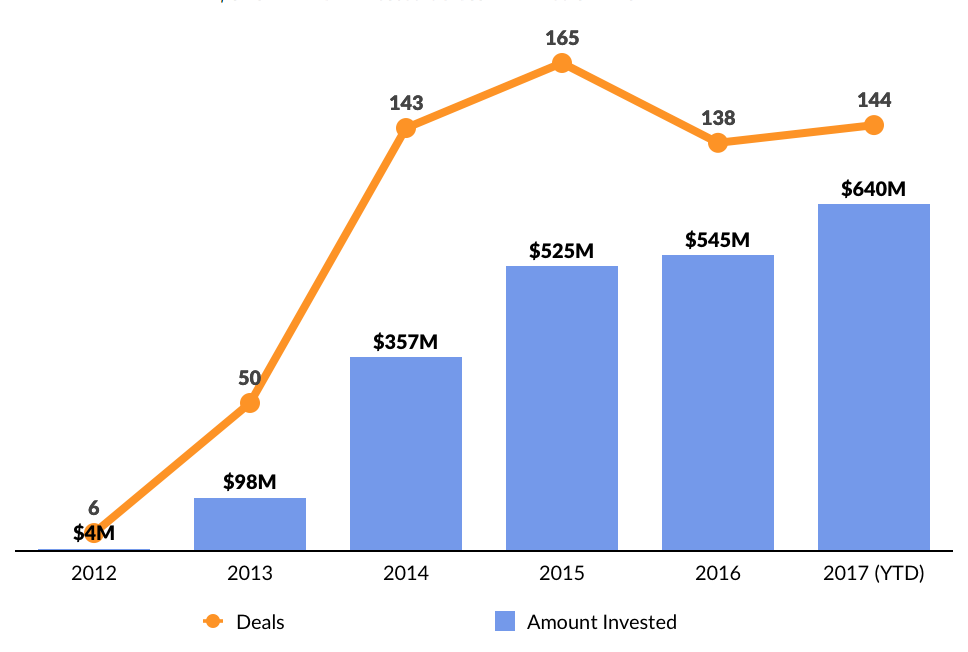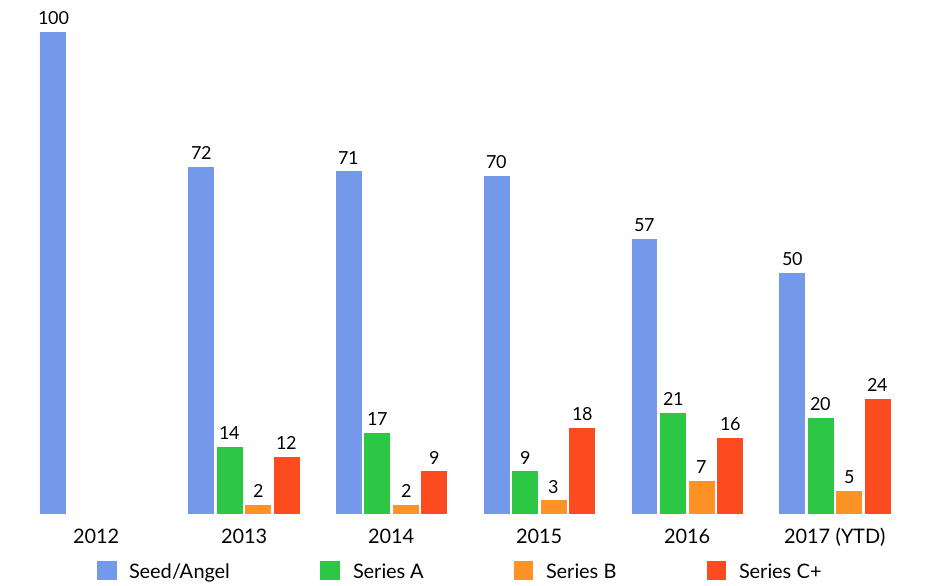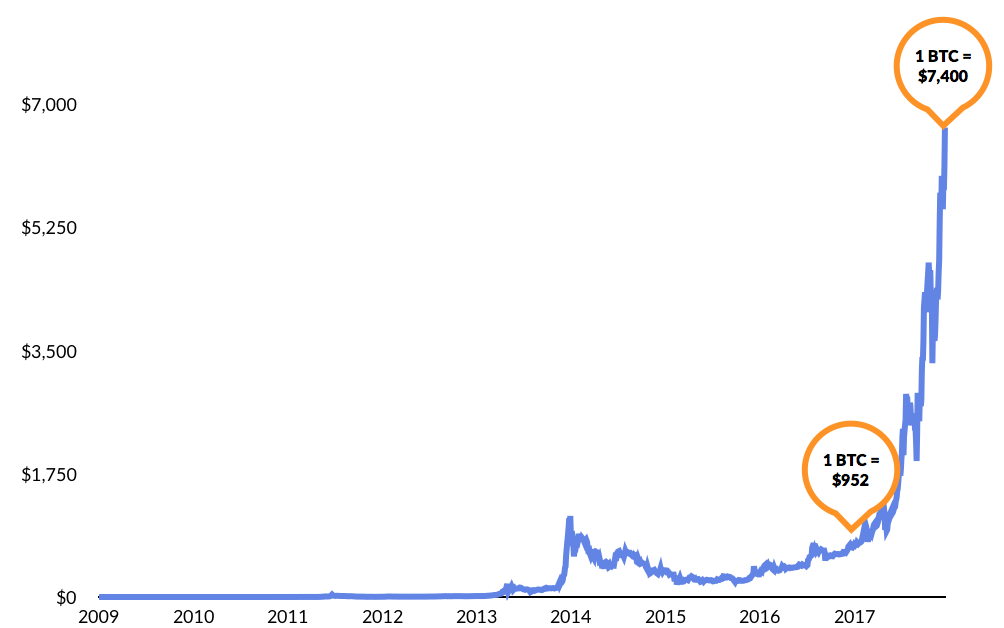Market Snapshot
| Indices | Week | YTD |
|---|
In 1439, Johannes Gutenberg, deeply indebted to suspicious business partners who believed he was hiding a great invention from them, perfected what would become the modern printing press.
Less than two decades later, trailed by a litany of lawsuits from financiers new and old, Gutenberg churned out the first batch of mass-printed books — 200 Latin Bibles. Word of Gutenberg’s machine quickly spread across the European continent, and by 1500, there were over half a million printed books in circulation.
Gutenberg’s invention was a catalyst in the truest sense. It accelerated ideas by democratizing access to information and knowledge. It was a key precursor to the Renaissance, a cultural and political phenomenon that altered the trajectory of history.
Over the past twenty years, the Internet has been a similar catalyst, accelerating information exchange, creating new business models, and ultimately unlocking broad new arenas of innovation. But the basic mechanics that guide how people and organizations execute transactions with one another — from payments to contracts and the exchange of goods and services — remain largely intact. If Gutenberg were to borrow money today, in other words, the basic process would be familiar.
But a new catalyst is emerging that could change all this. Blockchain technology is poised to enter the pantheon of invention alongside the printing press and the Internet. Here are the key trends, companies, and investors to watch.
RISE OF BLOCKCHAIN
To paraphrase Marc Andreessen, blockchain gives us, for the first time, a way for one Internet user to transfer a unique piece of digital property or information to another Internet user, such that the transfer is guaranteed to be safe and secure. Everyone knows that the transfer has taken place, and nobody can challenge the legitimacy of the transfer.

Bitcoin was the first major application of this technology.
Like gold, Bitcoin was designed to be scarce, requiring work to increase circulation. Instead of carving up the earth, Bitcoin required computational “mining” through a complex set of technical protocol.
While bars of gold exist independently of one another, Bitcoin introduced a new wrinkle as observed by Nathaniel Popper in his best-selling book, Digital Gold:
Bitcoins… were designed to live within a cleverly constructed decentralized network, just as all websites in the world exist only within the decentralized network known as the Internet. Like the Internet, the Bitcoin network wasn’t run by some centralized authority. Instead, it was built and sustained by all the people who hooked their computers into it, which anyone in the world could do. With the Internet, what connected everybody was a set of software rules, known as Internet protocol, which governed how information moved around. Bitcoin had its own set of protocol — the rules that dictated how the system worked.
While the complex technical nuances of Bitcoin’s protocol involve advanced math and cryptology, the fundamentals are strikingly clear. It’s a new way to create, store, and send money. And unlike Dollars and Euros, which are created by central banks and managed by complex financial institutions, Bitcoin is created and sustained by its users.
Bitcoin is built on a peer-to-peer technology framework called the “blockchain,” which is the essence of the new currency. The blockchain is a decentralized, public ledger that records information about transactions occurring in real-time. As transactions occur, it forms “blocks” that are linked together through an encrypted mathematical function, thereby forming a chain of records. Presto, “Blockchain.”
But Bitcoin is just the beginning. The underlying technology can applied to all manner of “exchanges,” whether or not they’re related to money. The consequences of this breakthrough are hard to overstate.
Here’s Andreessen in a 2014 interview with the Washington Post:
Digital stocks. Digital equities. Digital fundraising for companies. Digital bonds. Digital contracts, digital keys, digital title, who owns what — digital title to your house, to your car. Like for example, you get a digital title on a car, attached to a digital key, where you own your car on the Bitcoin blockchain and on your smartphone. The key for opening your car and starting your car is tied to that title. And if I sell you my car, automatically you get title, and you get the key that lets you operate the car, and it’s all digital, and it’s all unique, and it can’t be cracked. You’ve got digital voting, digital contracts, digital signatures… If we had had this technology 20 years ago, we would’ve built it into the browser.
Today, there’s an emerging belief and a lot of momentum in the idea that blockchain is the next major platform in computing. In the same way that the World went from mainframe to PC to Internet to Mobile — and in recent years, to Augmented and Virtual Reality — blockchain has the potential to be a transformational technology.

FIVE TO WATCH: TOP FUNDED BLOCKCHAIN COMPANIES
You can already see some of the largest financial and technology companies in the world deploying billions of dollars to understand, integrate, and apply blockchain.
Goldman Sachs, for example, has patented SETLCoin, a proprietary cryptocurrency that will settle securities trades more efficiently on a blockchain-based platform. Goldman Sachs continues to embrace bitcoin and is reported to be developing a trading operation dedicated specifically to bitcoin and other digital currencies.
The Linux Foundation has joined forces with IBM, JPMorgan, Accenture, Intel, and others to create the “Hyperledger Project,” an open-source attempt to find new use cases for blockchain technology. The list goes on.
At the same time, venture capitalists have taken notice, with investment activity accelerating for Bitcoin and blockchain startups. Through the the end of Q3 2017, blockchain startups raised $640 million across 144 financings, already surpassing the annual funding level and deals completed in 2016. Since 2012, over $2 billion has been invested in blockchain startups.

In August, Coinbase raised a $100 million Series D at a $1.6 billion valuation from investors including Greylock, IVP, Battery Ventures, Spark Capital and Draper Associates. Investors in Coinbase’s earlier rounds include Union Square Ventures, Andreessen Horowitz, Digital Currency Group, Y Combinator and Mitsubishi. Other notable 2017 financings include R3 ($107 million), Blockchain ($40 million Series B), and Bitfury ($30 million Series C).

Reflecting the early stage of the Bitcoin/blockchain innovation cycle, seed investments have accounted for over 70% of deals per year since 2012. But this trend is changing as the industry matures. Based on the first three quarters of 2017, seed deal share is on pace to fall below 50% by year end. As the blockchain industry continues to mature, expect to see larger financing rounds and broader investor interest in the category.
1. Coinbase
- Founded: 2012
- Headquarters: San Francisco, California
- Total Funding: $217.2 million
- Investors: Andreessen Horowitz, DFJ, Y Combinator, Greylock, Battery Ventures, Spark Capital, IVP, Union Square Ventures, Draper Associates, Digital Currency Group, Bank of Tokyo, Mitsubishi UFJ
What They Do: Coinbase is a digital currency wallet that allows traders to buy and sell cryptocurrencies including Bitcoin, Ethereum, and Litecoin. Founded in 2012 with a mission to create an open financial system, the company allows users to create, manage, and transact with their own crypto-wallets. At its essence, Coinbase’s business model is centered around the transaction of buying or selling cryptocurrencies and the company takes a small cut from each transaction. It’s no surprise that skyrocketing cryptocurrency valuations have propelled Coinbase’s valuation. This year, Coinbase raised a $100 million Series D at a $1.6 billion valuation — the largest financing round for a bitcoin startup.

During the cryptocurrency boom in the first half of 2017, Coinbase quadrupled its user base and facilitated $15 billion in digital currency exchange.
2. Circle
- Founded: 2013
- Headquarters: Boston, Massachusetts
- Total Funding: $136 million
- Investors: Accel, Baidu, Goldman Sachs, Breyer Capital, IDG, CreditEase, General Catalyst, Oak Investment Partners, Pantera Capital
What They Do: Circle is a mobile payments network that lets people send and receive money anywhere in the world for free by harnessing Bitcoin’s blockchain — which is notable because it is taking advantage of the currency’s architecture more so than the currency itself. Local currency is converted into Bitcoin, transferred from the sender’s Circle account to the recipient, and then converted into the local currency.
Circle’s service is potentially game-changing because it makes exchanging money work like media and messaging in the mobile Internet age: free, global, on-demand, and delightful. Importantly, the fact that transactions are enabled by Bitcoin is incidental to the end user. Senders and recipients can link Visa and MasterCard credit and debit accounts to initiate transactions and receive payments. You don’t need to see the underlying Bitcoin unless you want to.
3. 21 Inc. (Earn.com)
- Founded: 2013
- Headquarters: San Francisco, California
- Total Funding: $121 million
- Investors: Andreessen Horowitz, Khosla Ventures, Data Collective, Qualcomm Ventures, RRE Ventures, Peter Thiel, Pantera Capital
What They Do: 21 Inc (now Earn.com) is the first token-based social network that allows users to earn digital currency by replying to emails and completing tasks. The platform is a two-sided marketplace that connects and allows users to complete paid tasks applicable to their personal skills and interests. The company is also launching its own token (SOC) by the end of 2017, which will be awarded to users on the company’s platform.
4. R3
- Founded: 2014
- Headquarters: New York, New York
- Total Funding: $107 million
- Investors: Temasek, Deutsche Bank, Credit Suisse, Intel, Citi, BNP Paribas, Wells Fargo, HSBC, UBS, Mizuho Capital, Barclays, Royal Bank of Canada, Bank of America Merrill Lynch, BMO, ING, Ping An, SBI Group
What They Do: In 2014, a consortium of more than 45 institutions, including JPMorgan, Barclays, and Wells Fargo, launched R3 to develop and commercialize blockchain applications for finance. Last year, the group revealed that it had successfully simulated trades of digital assets on a private network spanning four continents. Today, the R3’s membership includes over 100 banks, regulators, trade associations, and professional services firms.
5. Ripple
- Founded: 2012
- Headquarters: San Francisco, California
- Total Funding: $94 million
- Investors: Andreessen Horowitz, Lightspeed Venture Partners, GV, IDG, RRE Ventures AME Cloud Ventures, Digital Currency Group, Pantera Capital, Accenture
What They Do: Ripple is a real-time decentralized payment system that simplifies global payments by enabling financial institutions and banks to directly transact. The company currently counts over 100 customers including UBS, BMO and CBI, many of which use Ripple’s blockchain to move large blocks of money between countries. According to the Financial Times, the company counts $15 billion of cryptocurrency reserves.
FIVE TO WATCH: INVESTORS
Venture investment in blockchain startups is accelerating as entrepreneurs begin to apply the technology to a broad range of use cases. Here are five investors to watch.
Andreessen Horowitz
Notable Investments: 21.co, Polychain Capital, OpenBazaar, Coinbase, Axoni, Samsara, MetaStable Capital, TradeBlock, MetaChain
Andreessen Horowitz, one of the pre-eminent venture capital firms in Silicon Valley, has been an early supporter of Bitcoin and Blockchain technologies. In January 2014, Marc Andreessen penned a piece in the New York Times titled “Why Bitcoin Matters,” where he laid out the case for the transformative implications for the technology. At the time, Andreessen Horowitz had already invested $50 million into bitcoin-related startups. The firm continues to be active investors in the blockchain category, targeting companies with applications ranging from social networking, to financial services and IoT. Starting last year, the firm expanded its focus to also invest in cryptocurrency hedge funds such as Polychain Capital and MetaStable Capital.
Digital Currency Group
Notable Investments: Circle, Coinbase, Ripple, Xapo, BitGo, Abra, Elliptic, Colu, Wyre, Filament, ShapeShift, Axoni, Blockchain, Luno
Founded in 2015 by Barry Silbert, Digital Currency Group builds, invests in, and supports bitcoin and blockchain startups. Ultimately, the company is seeking to build the largest early-stage investment portfolio in the blockchain category. The firm has been an active early stage investor in over 80 blockchain startups globally and also manages a bitcoin brokerage firm (Genesis Trading), a digital currency asset manager (Grayscale Investments), as well as a related conference and media platform.
Draper Associates/Tim Draper
Notable Investments: Coinbase, BitPesa, Wyre, Funderbeam
In June 2014, Tim Draper famously purchased 30,000 bitcoins that were previously seized by the U.S. Marshals from a group of unsavory characters. Today, those same bitcoins are estimated to be valued at over $19 million. Tim Draper and his son Adam have been avid and early backers of bitcoin and blockchain startups.
Pantera Capital
Notable Investments: 21 Inc, Bitstamp, BitPesa, Circle, Chain, ChangeTip, Korbit, Xapo
Founded in 2003, San Francisco-based Pantera Capital is one of the earliest investors in Bitcoin and blockchain technologies. The firm’s founder and CEO ,Dan Morehaed, was formerly the Chief Financial Officer at Tiger Management and has held executive roles at Deutsche Bank and Goldman Sachs.
In 2014, Pantera partnered with Fortress Investment Group, Benchmark, and Ribbit Capital to created a bitcoin investment fund called Pantera Bitcoin Partners. The firm is also now raising a new ICO hedge fund called the Pantera ICO Fund. With a target $100 million close, the fund will be managed by Morehaed and Chief Investment Officer Joey Krug. The fund will primarily seek to fund new protocols that will integrate and utilize decentralized data in novel ways.
Union Square Ventures
Notable Investments: Polychain Capital, OpenBazaar, Coinbase, Blockstack, MediaChain
Union Square Ventures has been an early advocate and backer of Bitcoin and blockchain startups. In 2013, the firm invested in Coinbase’s Series A, back when one Bitcoin was worth only $100 and Ethereum did not exist. The firm has gone on to invest in additional blockchain startups such as OpenBazaar, MediaChain, and Blockstack, and is one of the players in the sector by capital deployed. Most recently, the firm participated in Filecoin’s ICO and invested in cryptocurrency hedge fund Polychain Capital.
FIVE TO WATCH: CORPORATE INITIATIVES
According to CB Insights, corporations have invested over $1.2 billion across over 140 deals into blockchain startups since 2012. Over the past five years, the most active investors have been SBI Holdings, Alphabet, Overstock, Citi, and Goldman Sachs.

Financial services and banks were the first to turn their attention and open their wallets for blockchain startups, which isn’t surprising given blockchain’s direct application in financial services. But technology companies like Alibaba and IBM have taken notice, either investing in or developing their own blockchain initiatives.
Alibaba
Chinese behemoth Alibaba has been actively investing in and developing blockchain technology for the past several years across their business portfolio. Digital payment spinout Ant Financial has been an aggressive early adopter.
Alibaba is also turning its attention towards applying blockchain technology outside of financial services. This year, the company partnered with PwC to create transparency in China’s food sector using blockchain. Alibaba also partnered with Australia Post to use blockchain to crack down on counterfeit food imports into China. Additionally, Alibaba’s Ali Health partnered with the Chinese city of Changzhou to secure and monitor healthcare data using blockchain.
IBM
IBM is an emerging leader in blockchain, with a reported 40% of technology executives ranking the company as the preeminent voice in the industry. IBM’s blockchain platform, which is powered by “Hyperledger,” was designed to accelerate the adoption of the technology globally.
IBM has worked with over 400 companies ranging from Walmart to Northern Trust and SecureKey to help them adopt, implement, and understand blockchain. The company also runs blockchain workshops and hosts the IBM Blockchain Accelerator to catalyze relevant startups. This month, IBM announced a new blockchain banking solution in partnership with Stellar and KlickEx Group to expedite and lower the cost of global payments.
Microsoft
Microsoft brings blockchain technology to its customers through Microsoft Azure, its cloud computing platform. This August, Microsoft announced the creation of Coco (“Confidential Consortium”), a framework that enables corporations to create high-scale, confidential blockchain networks in conjunction with their use of Azure. It is designed to help companies more easily navigate issues related to confidentiality, governance, and other regulatory hurdles. The technology, which will launch in 2018, is compatible with Ethereum. JPMorgan, Intel, and R3 have committed to integrating their ledgers into the platform.
Alphabet
Alphabet, through its venture arm GV, has been an active investor in notable blockchain startups, including Ripple. Additionally, DeepMind, Alphabet’s artificial intelligence division, created DeepMind Health, a system that tracks and monitors healthcare data through a blockchain-style ledger. DeepMind Health will use a ledger to monitor how every bit of patient data is being tracked and applied, bringing transparency to both doctors and patients.
R3
R3 represents a massive alliance of the World’s largest financial institutions to build a new operating system for financial markets using Corda, its blockchain platform. Launched in 2014 to develop and commercialize blockchain applications for finance, R3’s consortium today includes over 100 banks, regulators, trade associations and professional services firms. This year R3 raised $107 million from financial services firms around the World.
FIVE TO WATCH: KEY APPLICATIONS
A first generation of startups have surfaced that are creating enterprise applications using blockchain technology, which can be applied across a variety of industries. Working with large companies like banks and insurance providers, companies like Blockstream, BitFury, and Factom are laying the “digital tracks” that will enable broader application and adoption of the technology.
Ethereum, a non-profit that is creating a blockchain framework intended to be more flexible than the original model which was created for Bitcoin, has helped evangelize the technology beyond cryptocurrencies. Moving forward, we see key areas for the emergence of additional blockchain “blockbusters”.
Security, Insurance, Contracts
Notable Companies: Blockstream, Chain, Digital Asset, R3, Ripple, Safe Share
If Bitcoin represents a revolution in money, blockchain could be a revolution in finance. It has the potential to serve as an open platform to move assets and securities. In other words, an industry of middlemen is facing an existential crisis. A distributed ledger will reduce the need and costs for intermediaries focused on trading, cross-border payments, and custodial services, to name a few.
In 2014, not surprisingly, a private consortium of more than 45 institutions, including JPMorgan, Barclays, and Wells Fargo, launched R3 to develop and commercialize blockchain applications for finance. Last year, the group revealed that it had successfully simulated trades of digital assets on a private network spanning four continents. This May, the company raised $107 million from investors including SBI Group, Bank of America Merrill Lynch, HSBC, Intel and Temasek.
Last year, Singapore’s central bank announced that it would begin testing the issuance of digital currency using a blockchain-based interbank payment system — a project supported by R3. The initiative, which also involves the country’s stock exchange and eight banks, is aimed at simplifying the payments process and reducing transaction costs. Major stock exchanges — such as Australia’s AXS and NASDAQ — are also entering the mix. Finland is using a blockchain ledger to give refugees who don’t have bank accounts access to the country’s financial systems. Through blockchain, the country expedites the assimilation of thousands of asylum seekers.
By extension, blockchain is poised to transform how we think about the exchange of any asset or the creation of contracts. Visa and DocuSign, for example, have announced a partnership to use blockchain technology to streamline car leasing. The same fundamentals can be applied to the Real Estate market. The startup Ubitquity, for example, has created a blockchain-enabled platform to eliminate complex, paper-based transactions by integrating the tracking of land titles, property deeds, and liens into a single record. Safe Share is creating a comparable platform for the insurance industry, reducing processing costs and automating claims management with trigger-based payments.
Supply Chain + Logistics
Notable Companies: Hijro, Everledger, Provenance, Skuchain
At its core, a supply chain is a series of transactions that move products from a point of origin to a point of sale or deployment. While the World’s top manufactures, from Apple to Boeing, have developed competitive advantages through complex, proprietary global supply chains, tracing the origin and movement of products, and paying for them, remains inefficient and error-prone.
Blockchain can optimize supply chains by creating a secure, common record for all key participants to track the origin and movement of goods — from raw materials to components and manufactured end products. Transparency creates efficiencies for all participants, enabling quicker adjustments, more accurate forecasting, and targeted forensics in the case of recalls.
This year, mining giant BHP Billiton began to use blockchain to manage rock and fluid samples from its vendor network — a key input that guides where the company creates mines and oil wells. Instead of continuing to rely on emails and spreadsheets, BHP is partnering with blockchain startups BlockApps and Consensys to create a transparent ledger where technicians taking specimens can attach data (e.g. collection time and conditions) and lab researchers can add detailed reports. All will be immediately visible to anyone with the appropriate access.
IBM handles millions transactions per year, from its own vendor purchases to financing purchases for clients. Disputes, which take 44 days to resolve on average, typically arise over tax rates and missing or incorrect shipments. In September it began using a blockchain ledger that has reduced dispute resolution time to ten days on average. Additionally, Walmart began to work with IBM to follow the movement of pork in China using blockchain, to more easily target and monitor outbreaks.
Startups like Skuchain and Hijro are focusing on supply chain finance — a $2+ trillion market where suppliers borrow against expected receivables from major retailers like Walmart, which often push out their payments by 40 days or more. Financiers have traditionally offered suppliers who are eager to be paid right away the equivalent of payday loans, charging 5-10% for their services. But blockchain can create transparency around the process, providing better visibility into the status of receivables, enabling lenders to offer more competitive rates. This, in turn, enables suppliers to lower prices, as they are no longer burdened by unreasonable borrowing terms.
Education + Talent
Notable Companies: Learning Machine, Degreed
Abraham Lincoln, perhaps the greatest lawyer in American history, had no formal education. “Sixteen” was self-taught and he passed an examination to practice law in the Illinois Supreme Court by reading borrowed books from a local law firm. Just because Honest Abe didn’t go to a fancy law school did not mean that he lacked outstanding legal skills or that he wasn’t capable of becoming a highly effective lawyer.
Unfortunately, today, the college admissions officer remains the surrogate hiring director for many companies around the World. The college you went to and the degree you received is the proxy for your talents, instead of what you know, what you can do, and how effectively you can do it. But in Silicon Valley, what companies care about is if you have the skills to be effective (Can you code or not? Are you adaptive?), not if you graduated from some prestigious school.

The old ticket to ride was a degree. The new ticket to ride is going to be a Personal Knowledge Portfolio that incorporates content, courses, and experiences, which are curated over time. The fundamental skills of critical thinking, entrepreneurship, quantitative reasoning, and communication are the foundation of an effective Knowledge Portfolio.
Badges and certificates for verifiable skills will play an increasing role in a society that shifts its emphasis from the degree you were granted to the knowledge you possess. While traditional education continues to play a role, it’s about knowledge, not college. What you know, not where you go. We call this trend “Knowledge-as-a-Currency” and it will be accelerated by the application of blockchain technology.
The MIT Digital Certificates Project, under the leadership of Philipp Schmidt, is making this concept a reality. Working with Learning Machine, the initiative is creating an open infrastructure to create and exchange digital certificates using blockchain. As Schmidt observed in a recent blog post:
In essence, [blockchain] is a just a distributed ledger to record transactions. What makes it special is that it is durable, time-stamped, transparent and decentralized. Those characteristics are equally useful for managing financial transactions as for a system of reputation. In fact, you can think of reputation as a type of currency for social capital, rather than financial capital.
Looking forward, as a generation of lifelong learners increasingly turn to high-quality, lower cost university alternatives — from Coursera to General Assembly, and Pluralsight — blockchain enabled knowledge portfolios will unlock a more transparent, liquid talent pool, to the benefit of all stakeholders. (Disclosure: GSV owns shares in Coursera and General Assembly)
Healthcare
Notable Companies: Gem, Pokitdok, Tierion
Healthcare institutions suffer from an endemic inability to securely and efficiently share information, despite the profound opportunity to benefit consumers. A central challenge has been the absence of a shared communication network that both meets the needs of all parties without compromising patient information security. The net result has been a tangled network of redundant, error-prone records.
Blockchain technology has the potential to enable better data collaboration between providers, patients, and insurance companies, which would translate into higher probabilities of accurate diagnoses, increased likelihood of effective treatments, and reduced costs for all parties.
Gem, for example, recently launched the Gem Health Network in partnership with Philips. It’s an Ethereum-enabled blockchain network streamlining data movement and integration from patient records, wellness apps, insurance claims management, clinical and trials.
In 2016, the government of Estonia announced that it would begin securing over a million healthcare records using blockchain in partnership with Guardtime and Oracle. It’s the first national health system to adopt the technology.
IoT
Adding Internet connectivity to everything multiplies vulnerabilities. IoT devices effectively enable sophisticated attackers to move laterally across a centralized network after they gain an entry point. In other words, hackers can infiltrate one device and start probing an entire system until they find a high-value database of personal information or a repository of sensitive business data.
At the core of this challenge is the fact that the proliferation of Internet-connected devices has been fueled by the availability of low-cost, mass-produced semi-conductors which can be embedded in anything. According to Gartner, by 2020, there will be more than 20 billion connected things across the globe. The widespread availability and proliferation of these devices means that once a device is compromised, it’s very difficult for a company to flip a switch and correct the problem.
Blockchain technology can lead to the creation of secure connected networks, where IoT devices can interconnect in a reliable way while avoiding security threats. Every device can be registered on the blockchain, with each linked device being able to authenticate each other without a centralized certification. In this framework, it would be harder for hackers to move laterally after infiltrating one device.
Filament, for example, uses blockchain technology to power a network of IoT products for the agriculture, manufacturing and oil industry. Telstra, an Australian telecom giant, secures smart home IoT systems using blockchain.
IBM and Samsung recently created a decentralized IoT system called ADEPT, which stands for Automated Decentralized P2P Telemetry. This initiative creates a blockchain that serves as a public ledger and backbone for billions of IoT devices, removing the need for a central control hub. This enables devices to communicate with one another autonomously to broadcast transactions between peers, manage software updates, and perform self maintenance.
A special thanks to this week’s contributors: Sari Stenfors, Marten Stenfors, Brinkley Warren, Michael Feng, and Rahul Singireddy.





